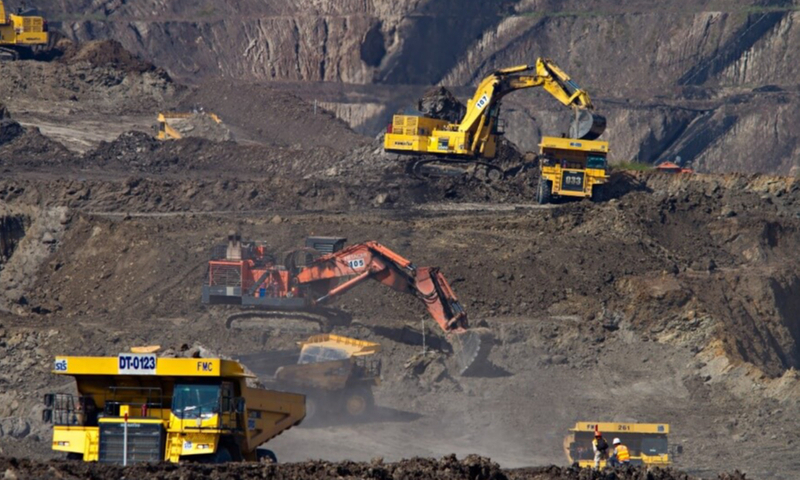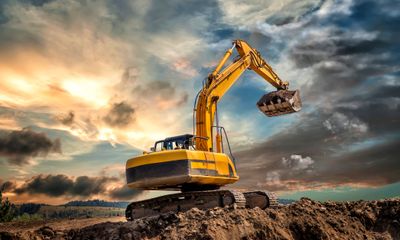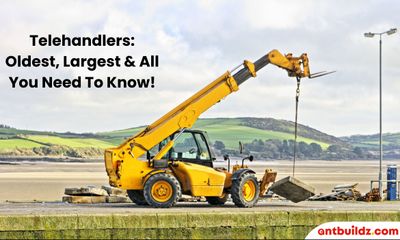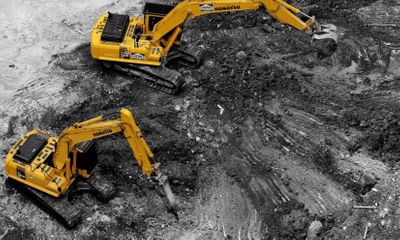© 2025 Powered by Antbuildz.com
© 2025 Powered by Antbuildz.com

Excavators are the most common equipment used in construction. Excavators can be used for any types of work such as normal grading work and landscaping, cutting of brushes with attachments, demolition of the building structure, mining excavation, dredging of rivers, Installation of piles in foundations, digging of foundations, holes, and trenches, handling and lifting of heavy materials and etc, you name it.
There are two main families of excavators which equipped with wheels and equipped with tracks, serve the different site conditions. Besides, plenty of types and sizes of excavators available in the market, you need to choose the right one to increase your productivity and safety. The right excavator is able to provide the required power and strength for your job done efficiently with the lowest cost.
Do you know how many types of excavators available? Learn here the 5 common types of Excavator.
As a construction engineer or supervisor, are you confident enough to decide which is the right excavator for your project? We have some tips for you to choose the right excavator for work. However, we will be more focused on common wheeled and crawler excavators.
How big the worksite layout?
If the excavator used to move material from one site to another size frequently on Jobsite and the traveling speed is crucial for you to save time. Then wheeled excavator probably may be the option you are looking for. If your job sites are scattering around the city area and your excavator needs to frequently travel to different job sites, a wheeled excavator may be also a good choice since it can travel on road and save your transportation cost. Otherwise, a crawler excavator may be a good choice for you.
The wheeled excavator has much more excellent mobility. It's running on the wheel and can move easily and faster, can even drive on road.
What is the terrain like?
You also need to check on the job site terrain. Different types of excavators will perform well on various terrains. For example, a crawler excavator offers excellent traction and stability on the steep slope and soft ground, where wheeled excavators perform best on the flat and hard landscape. So, if the Jobsite is flat and hard landscape, a wheeled excavator will be a good option and will not damage the ground easily. On the other hand, if the job site ground condition is muddy, sandy with a steep slope, then a crawler will be the better option.
What is the typical task for your excavator?
Excavators can be used for any type of work such as normal grading work and landscaping, cutting of brushes with attachments, demolition of the building structure, mining excavation, dredging of rivers, installation of piles in foundations, digging of foundations, holes, and trenches, handling and lifting of heavy materials and etc. Few scenarios here:
Or course, there are many more types of work that will never finish mentioned here. You should understand well on your job requirement to help you choose the right type of excavator.
We will focus more on the crawler excavator as it is the most common excavator used in Singapore or even in the entire world due to its versatility.
Basically, there are 3 common sizes of an excavator which are mini excavator, standard excavator, and large excavator. Different sizes come with different body dimensions, different power, and operating weight and reach. You must consider the worksite layout and job requirements to determine the best size of the excavator.

Above is the common Caterpillar classification of the size of the excavator. However, the classification may vary by a different manufacturers.
Mini and standard excavators are the most common size of excavators you can see around Singapore.

The dimension is crucial for your transportation and consideration of space constraints. You can easily refer to the dimension chart as in the specification for better planning. By this time, you should have a clear picture of which range of excavators will be suitable for your work. However, the size of the excavator comes with different specifications which may differ in rental price or purchase price. To get a more accurate selection, you need to understand the actual specification
You need to consider the digging depth, maximum reach, and lifting requirements for accurate selection.

You need to refer to the specification sheet of the excavator to check on the working range chart. Sample chart as above. It shows you a very clear picture of how the arm of the excavator can reach (maximum reach, height, and depth) to fit your requirement.

Then you need to check on the lifting capacity based on the lifting capacity table as above. Lifting capacity is crucial for you to determine the weight of the load that the equipment could carry, at any radius. Especially you are going to use your excavator for minor lifting work.

Selection of bucket is important to do the work right. There are many different types of buckets with different volumes and digging widths. A big bucket can make your excavation work more efficient. Meanwhile, a narrow width bucket can do more precise digging such as trenching or digging in restricted areas with underground facilities. Double-check that the size of bucket you choose suits your excavator.
By understanding your work requirement, you can check through the available excavator specification to select the excavator which is exactly what you need, but not over capacity which will cost more into your pocket, or under capacity that you may need to change the excavator again later.
By this stage, you should be able to rent the right excavator for your project. Remember, the right selection of excavators should be exactly what you need and not overcapacity. It should also give you the best value in terms of budget.
Remember to like and share our Facebook page!bit.ly/34MdSFh
Any Questions?
WhatsApp or Call Us for a FREE consultation on the most suitable equipment for your site. We’re more than happy to assist!
Related Articles

5 Common Types of Excavator
5 COMMON TYPES OF EXCAVATORS Excavators took 56% of the total of all constructio ...
Learn more
22 Jan , 2025

Telehandlers: Oldest, Largest & All You Need to Know!
Telehandlers are one of the most versatile and powerful pieces of equipment in t ...
Learn more
22 Jan , 2025

My experience as a UIUX Design Intern at Antbuildz, Ryan
In the summer of 2022, I had the opportunity to intern at Antbuildz.com as a UI/ ...
Learn more
22 Jan , 2025

Top 10 Construction Equipment Manufacturers in the World
Top 10 Construction Equipment Manufacturer in the World According to Yellow Tabl ...
Learn more
22 Jan , 2025